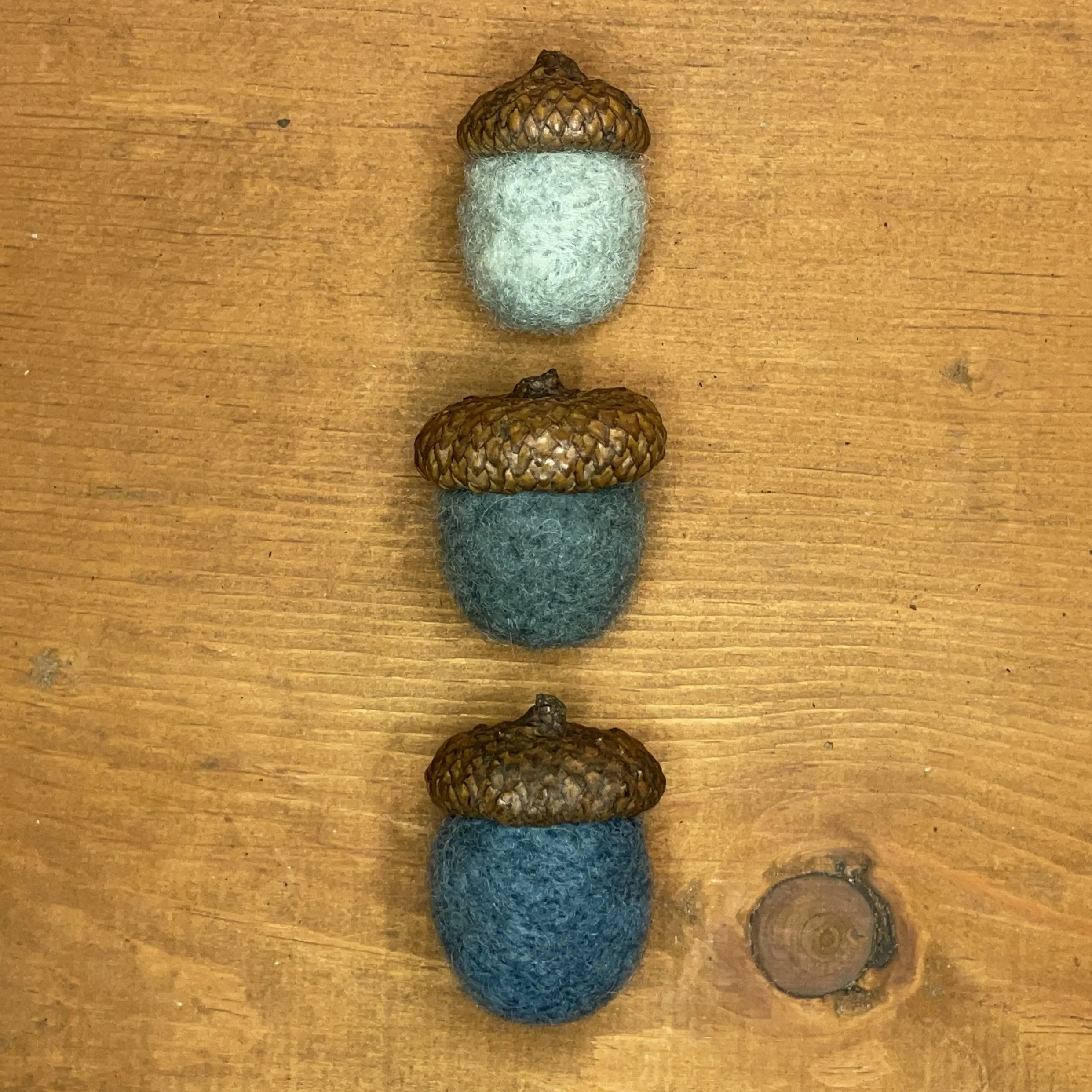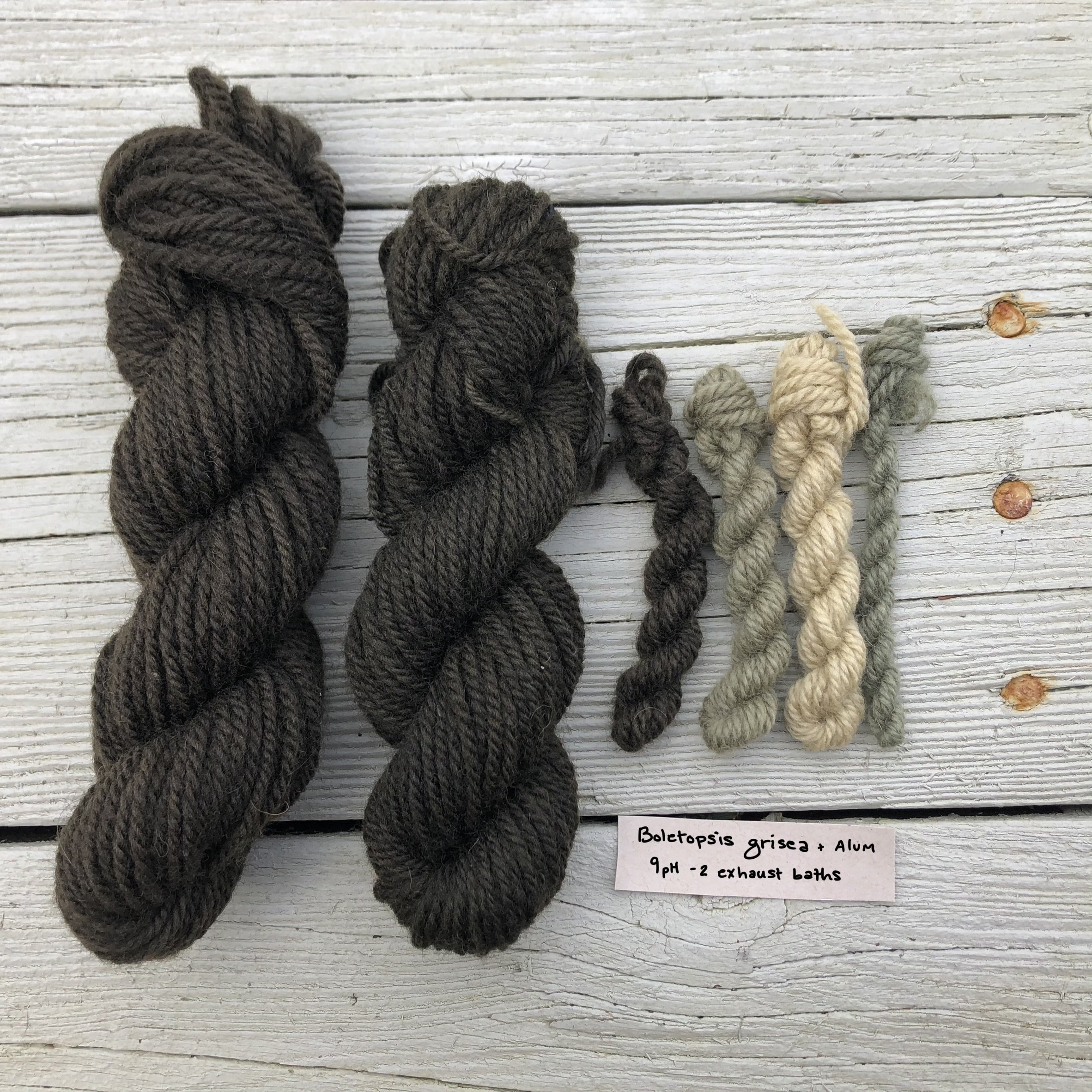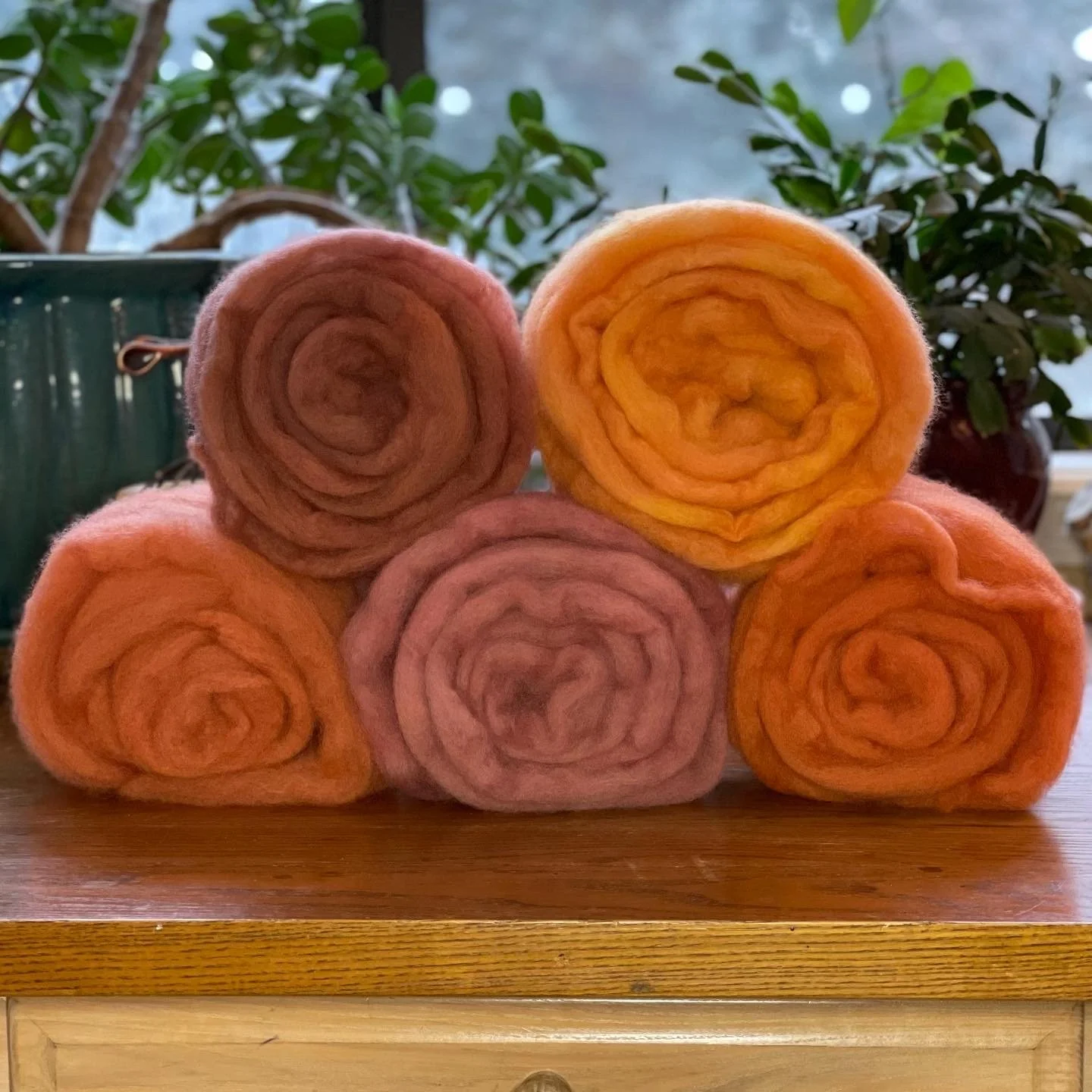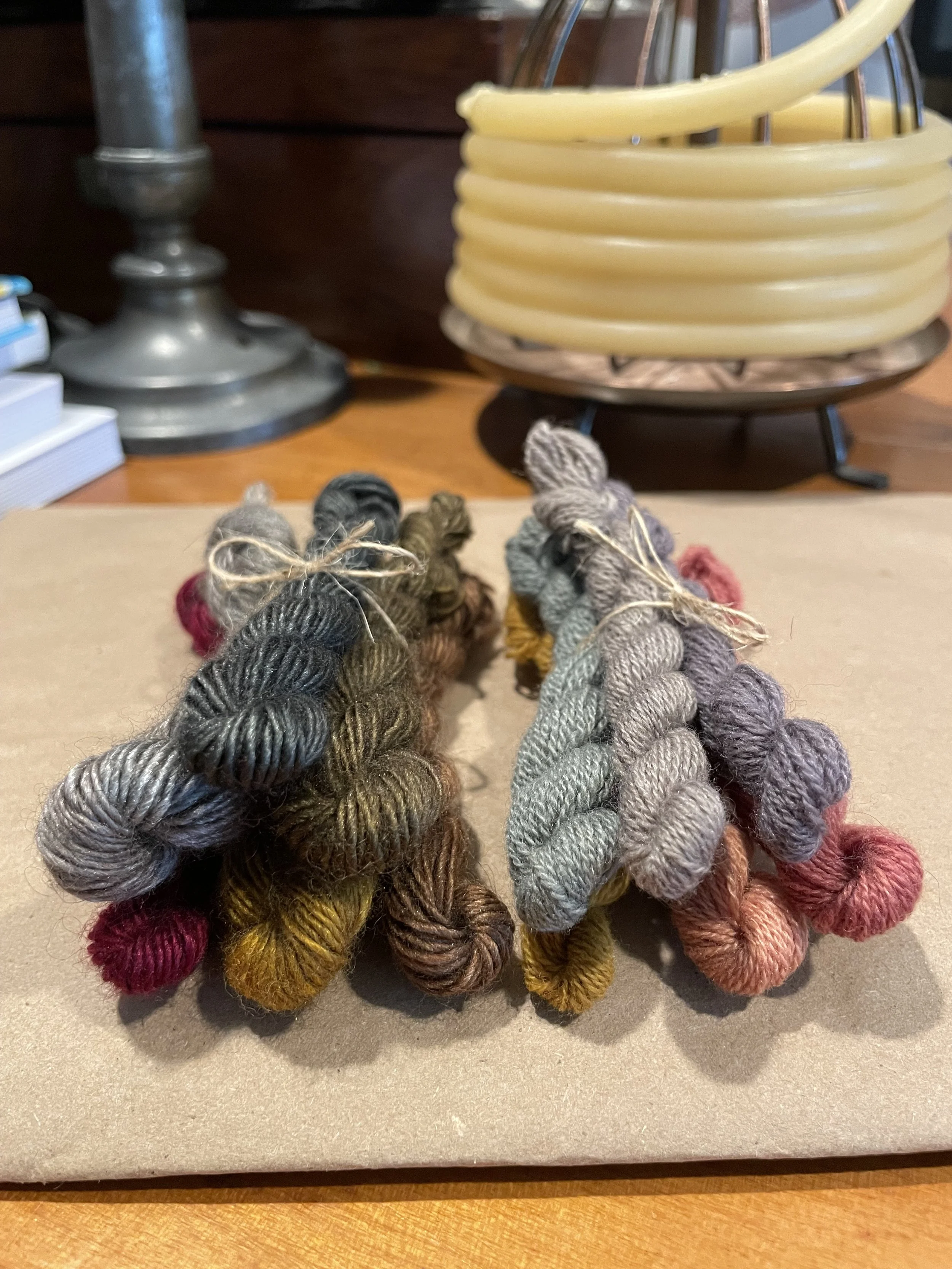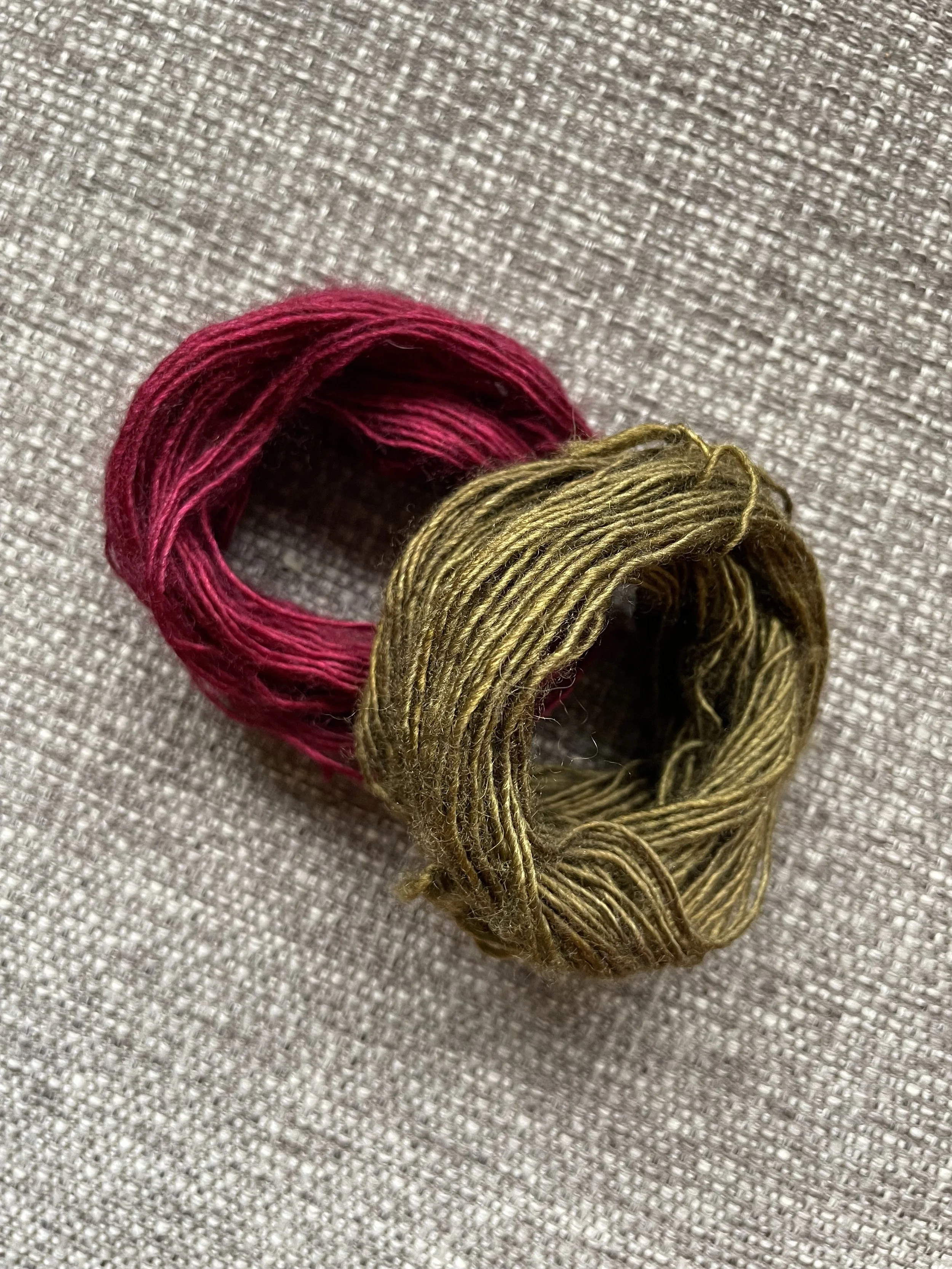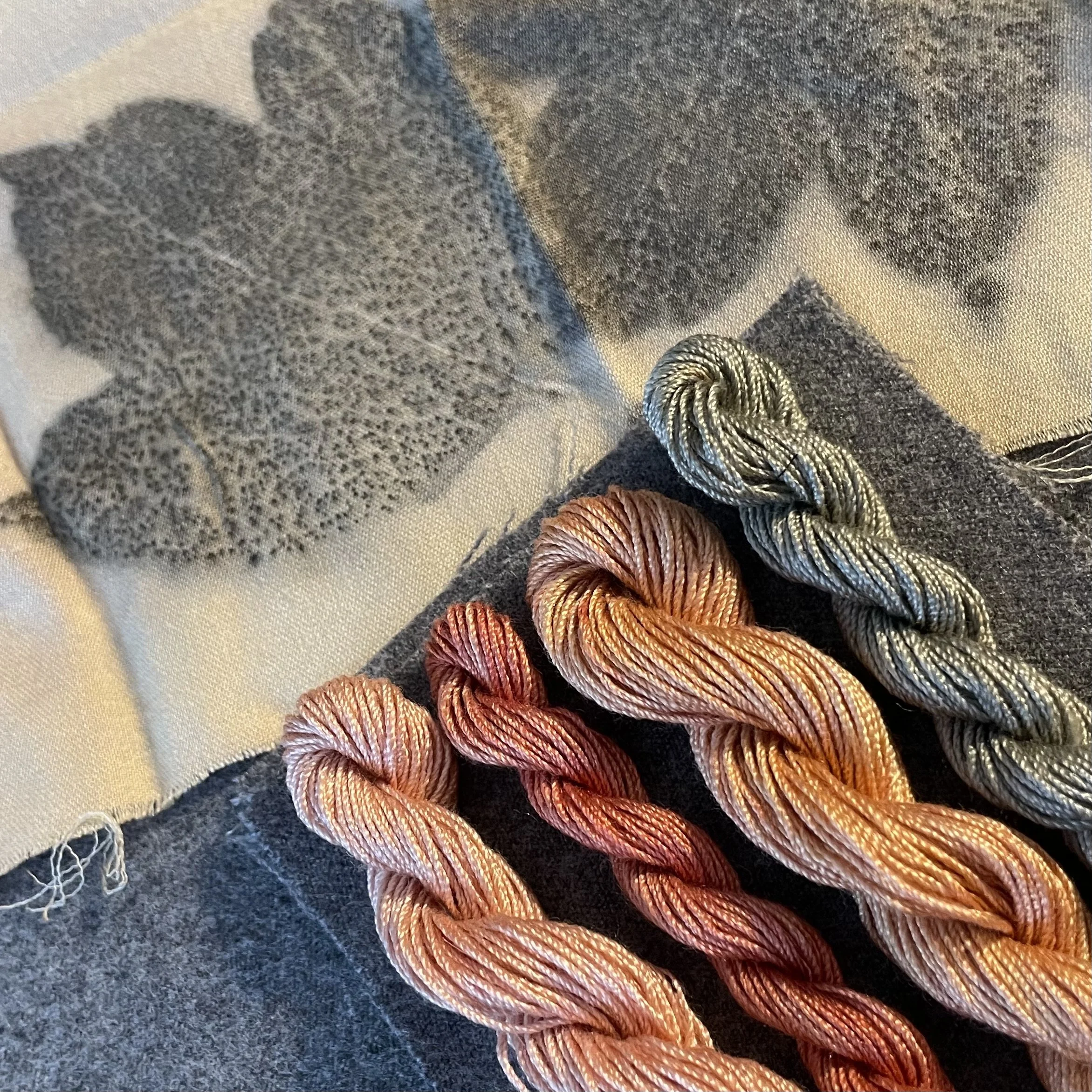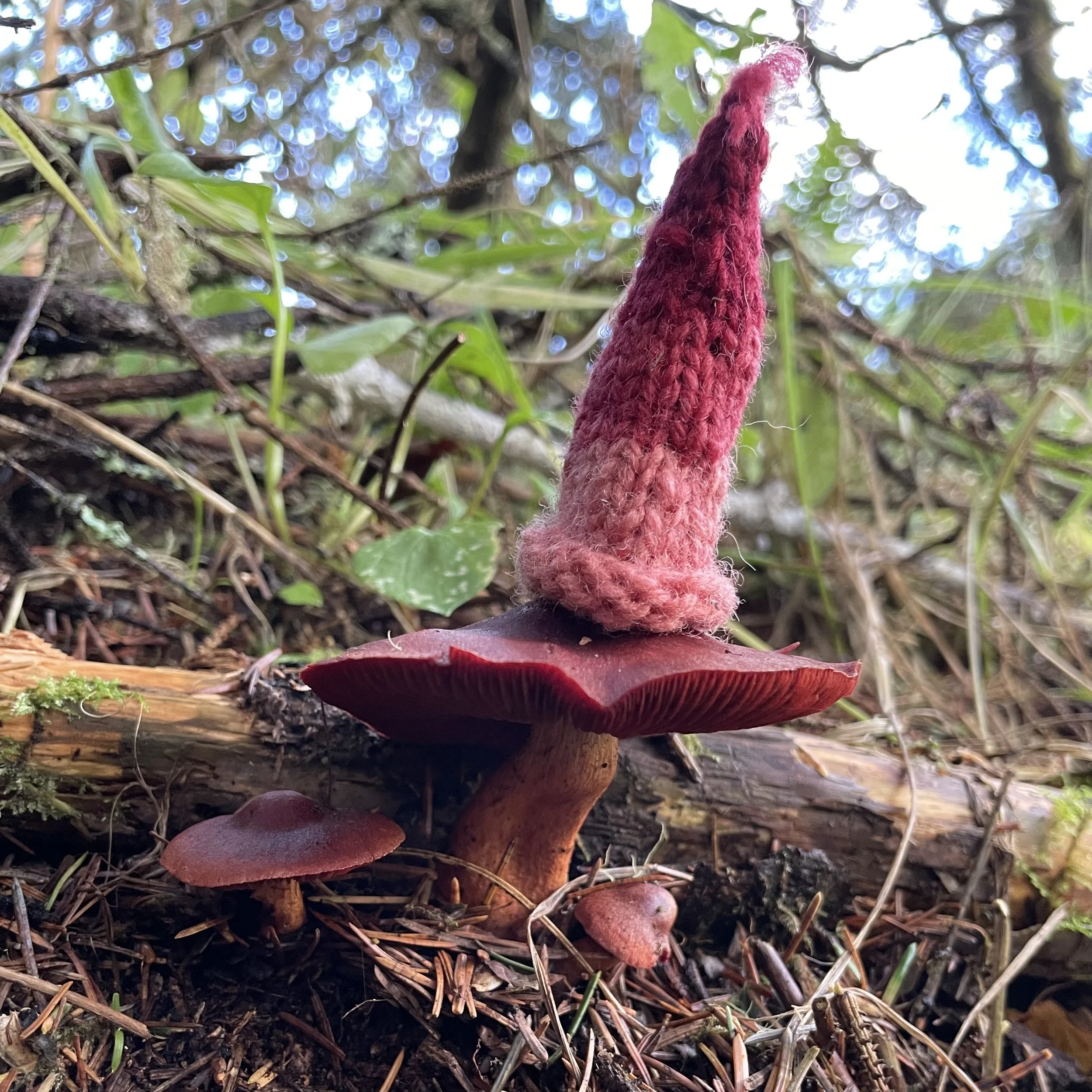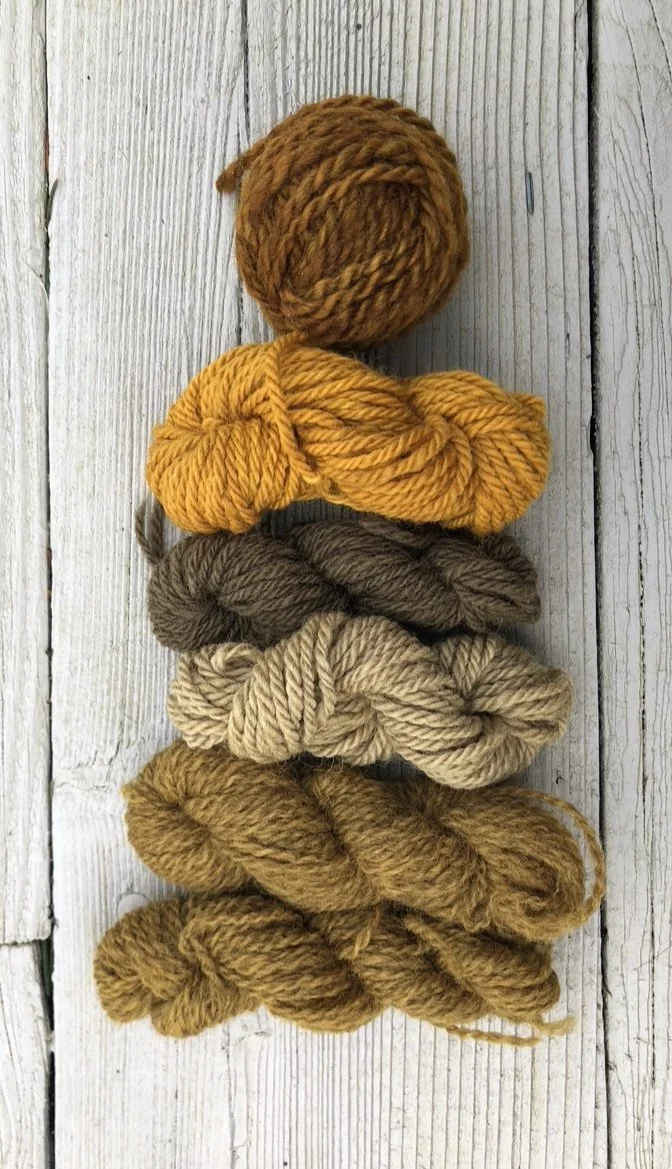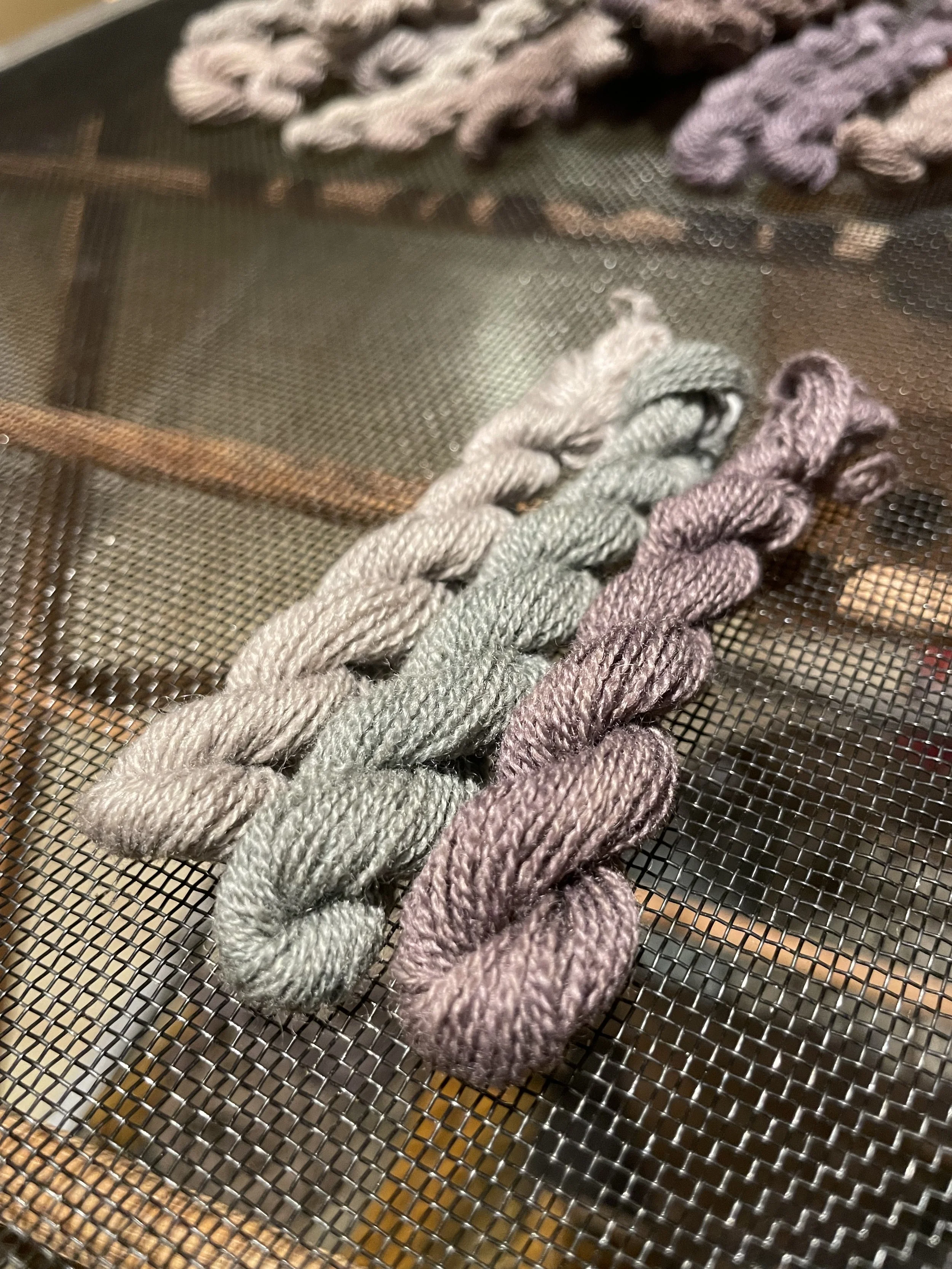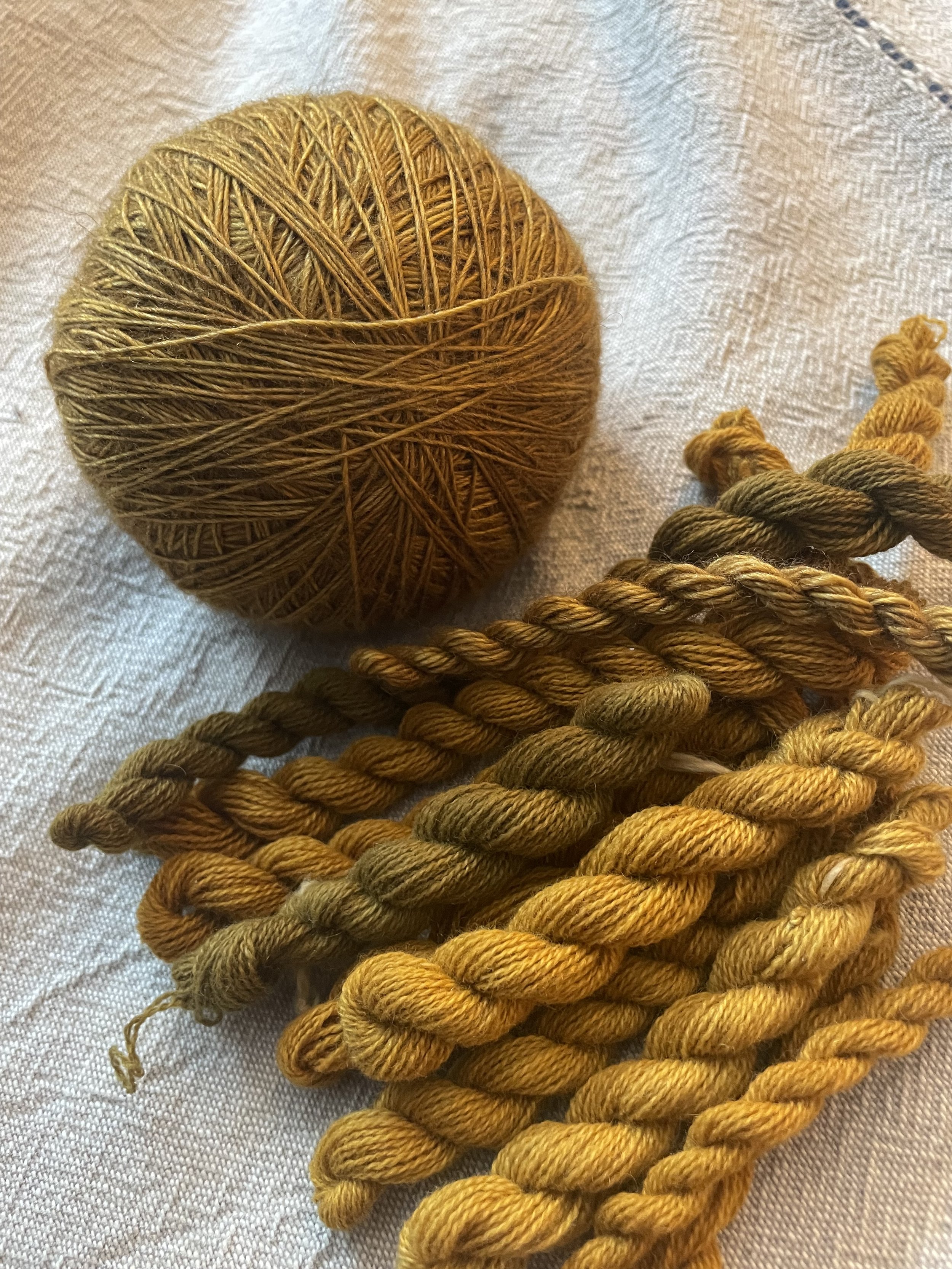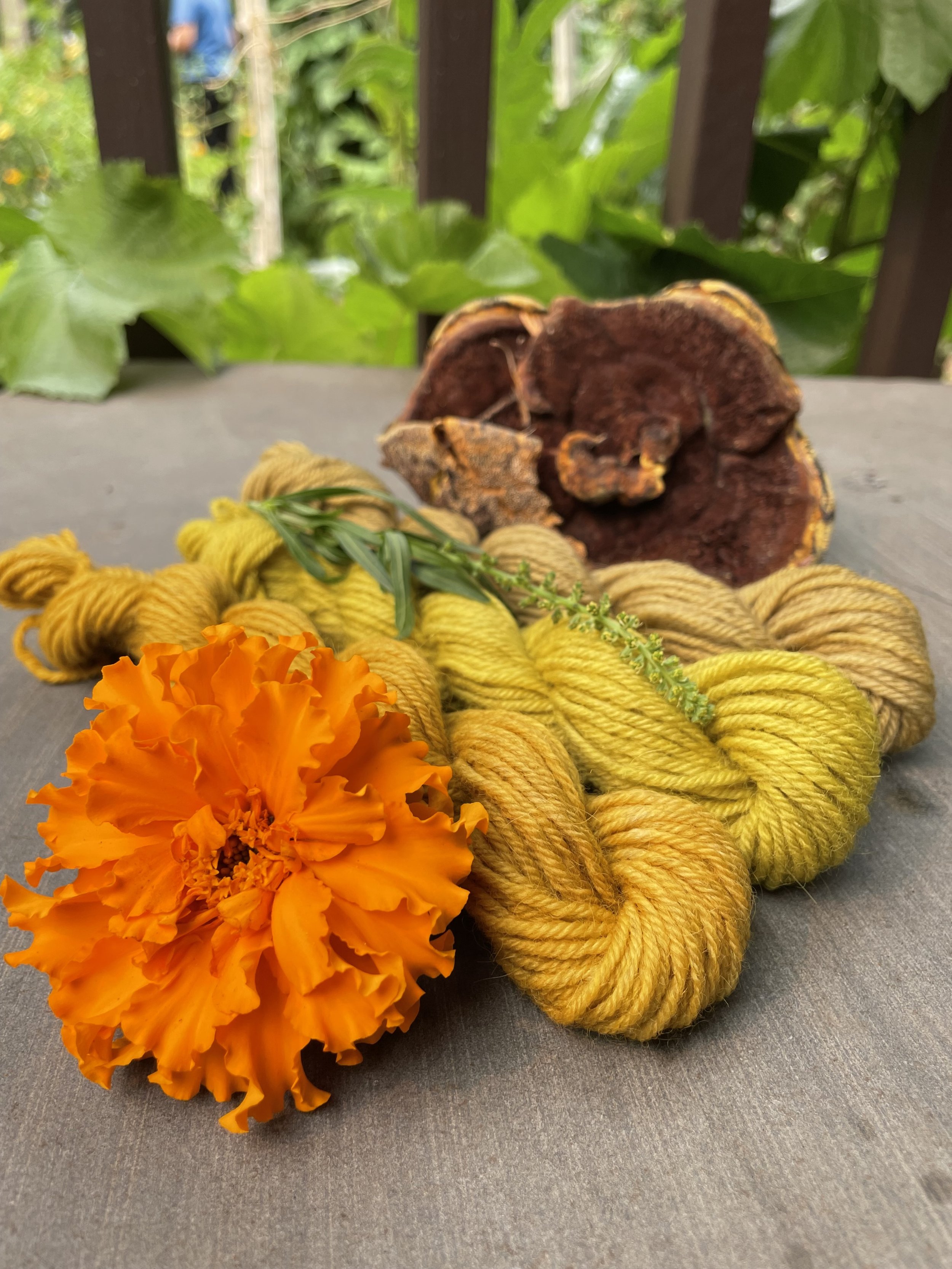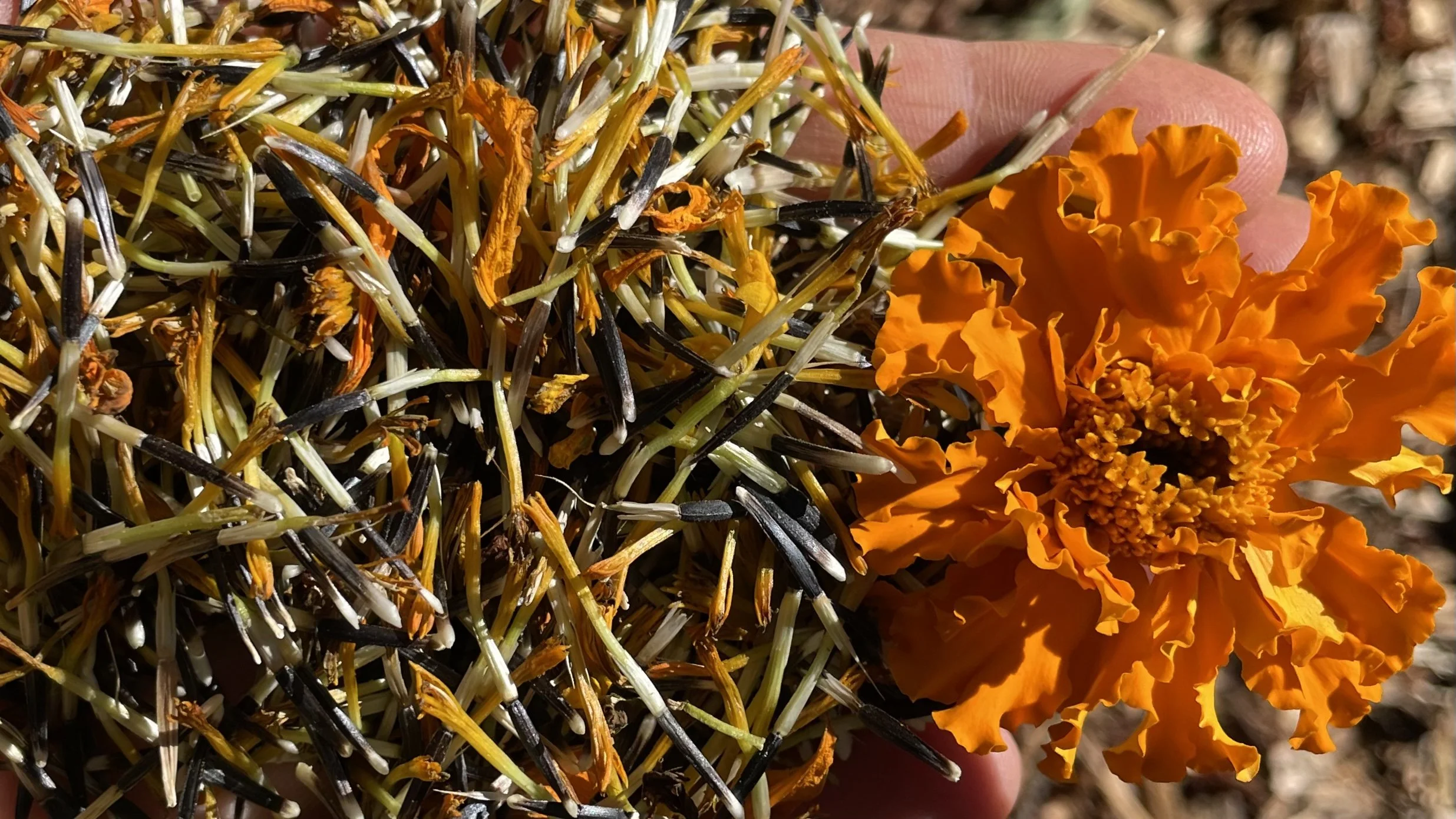It was a Dyer’s Polypore, aka Phaeolus schweinitzii.
We met under a fir tree 15 years ago. It was old, dark and crusty, and gifted me a dull shade of brown, but it introduced me to a bright and colorful future in dying.
We’ve come a long way together.
My color craft started with one old, crusty mushroom.
This Dyers Polypore mushroom is in its prime and looks a bit different than the old, dark and crusty one I used to dye my first skein. I’m thrilled when I find one like this!
Phaeolus Schweinitzii was my “gateway mushroom”. It is a beautiful, parasitic polypore fungus that colonizes conifer trees throughout the world, causing them to rot from the inside out. It derives energy and moisture from the roots and body of the tree, then emerges in a layer of fans from the tree base in Summer and Fall. It continues to break down the tree’s cellulose long after the tree is dead.
Back when I started, rumors were floating around my foraging circles that Dyers Polypore would generously produce golds, greens and browns on wool depending on how the fiber was prepared. This was before the advent of social media groups and the generous online contributions to all-things-crafty that dyers have access to today. If we weren’t part of a Mycological Society, then we were tracking down an out-of-print copy of Miriam Rice’s fungi dye book or Arlene Bessette’s lovely book Rainbow Beneath My Feet.
We’re in a new age of Mushroom Dyeing now, however and folks interested in learning this craft have many options. You can find out how to get those golds and greens from P. Schweinitzii with a simple Google search, Alyssa Allen’s Mushroom Dyer’s United Facebook Group, or Julie Beeler’s beautiful Mushroom Color Atlas . I’m grateful to other dyers around the world and it’s good to know we’re not alone in our craft. More folks experimenting and sharing in this way means we all learn more quickly and sometimes even enjoy convening in our local communities for mushroom forays.
The Gifts of Time & Other Dyers
My dye-craft grew when I decided to dedicate days, weeks and months at a time to it. My kitchen became my studio. Learning to take better notes, sharing my failures, tweaking the variables, praying to the mushroom gods, pouring through the internet and just plain old kitchen time… was time well spent. Learning some of the chemistry behind the magic was invaluable as well, and I enjoy sharing this in my class experiences.
We’re working with wild fungi, however, and it’s good to remember that they come with their own individual surprises and personalities. I prefer to meet them from that place, with humility, always ready for variations in my plan to emerge. It’s a much more satisfying and playful relationship that way.
I have many people to thank for their generous sharing. People I’ve considered teachers or who have contributed to my dye craft are Alyssa Allen and all the other contributors to her Facebook Group United Mushroom and Lichen Dyers, Joy Boutrop and Catherine Ellis, Michel Garcia, Julie Beeler and my neighbor Jan Jacque. Once you have the basic principles of dyeing down, however, the true teachers are the mushrooms themselves. I am truly in love with this craft because of them.
My Class Approach
My class experiences always include time spent building a foundation for care and respect of the fungi, plant and animal communities with whom we are interacting. This relationship is foundational for me and my approach to mushroom dying.
Colorfastness is also a subject I like to cover. As dyers and lovers of color, I think it’s important to develop an awareness of what plants and fungi offer us as individuals, how to convince them to stay in our fibers as long as possible, and also the limits of our knowledge and abilities to do so. That means understanding mordants and modifiers and how they interact with different materials and fibers. We’ll dig into some chemistry too.
I’m a big fan of having you leave with more than just samples! It’s great to get an expansive foundation with as many colors as possible. I’ve really found over the years, however, that I’m happiest as a teacher when I send folks away with something they can use in a project. You’ll notice that in my class offerings.
We’ll also go over how to dispose of or repurpose your leftover dye materials in safe and creative ways. I tend to use the least toxic mordants and modifiers in my dye work, as disposal and exposure is always on my mind.
Foraging Foundations
One of the highlights of this craft is time spent foraging in some of my favorite places. There’s nothing better than learning new and interesting things year after year about the folks who live there. What they like and don’t like, how to care for them, and how they’re doing after an unusually dry summer is the kind of “family time” we could all use a little more of in life. These communities do feel like extended family, after all.
Wild & Garden Plant Dyes
Dyeing with wild and cultivated plant materials is a part of my color craft as well. Understanding our local color palette is another way I’ve deepened my relationship with the land over the years, seasonally welcoming wild plants into my own yearly cycles, and sometimes into the dye pot. I just started growing my own traditional dye plants like indigo, madder root, marigold and others in 2021. I look forward to incorporating these natural dyes into class experiences I’ll be offering in 2023. If you ask me about dyeing with indigo, however, I’ll likely refer you to a couple skilled Indigo dye facilitators on the West Coast with whom I’m learning. Indigo is a big blue world that I am just entering into, and I can only speak to it as a baby blue beginner. Feel free to ask me about indigo instructors that have influenced me.
Dye Gallery


